I don’t like thinking of myself as a “patient” anymore. –TJ
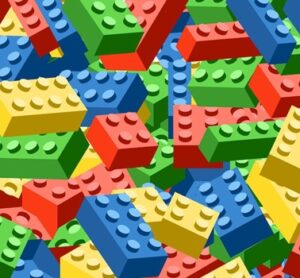 As we move away from the peak of our health crisis, there can be a period of mourning over what has been lost during the process, as well as a greater appreciation of life and its goodness. Eventually, it’s time to focus on rebuilding.
As we move away from the peak of our health crisis, there can be a period of mourning over what has been lost during the process, as well as a greater appreciation of life and its goodness. Eventually, it’s time to focus on rebuilding.
For some, their lives look and feel similar to the way they were before the crisis. For others, the changes require redefining their identity and how time is spent.
Whether we are aware of it or not, we all have ways in which we identify ourselves. During this time of rebuilding, our identity and activities take shape anew.
How Do You Want To Be Now?
 Each of us is made up of a collection of personality characteristics that makes us unique. While you might have the same personality traits as someone else, each individual will have different amounts of each trait. The combination and amounts make you unique. Knowing your personality traits is helpful during many times of your life, but it is particularly important now. The better we know ourselves, the easier it is to figure out how to move to more solid ground.
Each of us is made up of a collection of personality characteristics that makes us unique. While you might have the same personality traits as someone else, each individual will have different amounts of each trait. The combination and amounts make you unique. Knowing your personality traits is helpful during many times of your life, but it is particularly important now. The better we know ourselves, the easier it is to figure out how to move to more solid ground.
Identifying your personality characteristics or traits is a good place to start. First, think back to what you were like when you were in elementary school, as children tend to be closer to their pure selves (also known as soul self). Picture yourself back then and write down traits you exhibited as they pop into your mind. Try not to censor or evaluate them; let the words bubble forth. How would you describe yourself back then?
Workbook Chapter 18 Rebuilding How Do You Want to Be Now
Personality characteristics/traits
|
Example: adventurous |
|
|
|
|
|
|
|
|
|
|
|
|
|
|
|
|
|
|
|
|
|
|
If you have difficulty generating words that describe you, there is a list of character traits in the Appendix.
Looking over the list you generated, write the five or six words that best capture the real you/soul self of your childhood.
|
|
|
|
|
|
|
|
|
|
|
|
|
|
Next, list words that describe you as a result of your medical journey. Again, don’t overthink, go with your first reaction.
|
|
|
|
|
|
|
|
|
|
|
|
Compare the first list of words (your “child self”) and the list related to the present. What traits are on both lists?
|
|
|
|
|
|
Which traits are different?
|
|
|
|
|
|
Are there any on the child list that you would like to recapture?
|
|
|
|
|
|
Are there any current traits you would like to build on as you move forward?
|
|
|
|
|
|
Any traits you would like to let go of?
|
|
|
|
|
|
 A client of mine identified her top five “child” traits as happy, reader, shy, achiever, and hard worker. Her current list overlapped with hard worker. The other four from her current list were worrier, uncertain, strong, and determined. As she looked at the current list, she felt she had become stronger and more determined from what she went through, as well as from other situations in her adult life, but she didn’t like being the worrier she had become. She believed worrying and feeling uncertain were a direct result of having cancer. Wanting to change, she decided to take Tai Chi classes to feel even stronger and more confident. She soon found that building on those qualities lessened her worry.
A client of mine identified her top five “child” traits as happy, reader, shy, achiever, and hard worker. Her current list overlapped with hard worker. The other four from her current list were worrier, uncertain, strong, and determined. As she looked at the current list, she felt she had become stronger and more determined from what she went through, as well as from other situations in her adult life, but she didn’t like being the worrier she had become. She believed worrying and feeling uncertain were a direct result of having cancer. Wanting to change, she decided to take Tai Chi classes to feel even stronger and more confident. She soon found that building on those qualities lessened her worry.
Cindy’s Journey Not the Fun One
We all have labels. Sometimes the labels are flattering, other times not. The angst of teen years is heightened as our self-consciousness clings to others’ opinions. But it isn’t just peers that have labels for others; parents do too. The labels might be overt or subtle, but they are there. If you are asked to describe someone, usually the first word offered is one of the labels used to categorize the person. Try it. Make a list of friends, family members or colleagues and write two words you would use to describe them. Those two words make up the labels you hold in your mind.
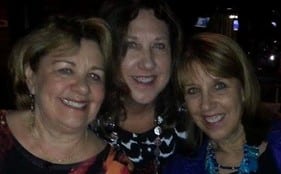 My two sisters, Debbie and Betsey, and I have eleven children in total. My niece, Jennifer, leads the pack of cousins due to her inherent leadership skills and because she is ten or more years older than the rest. Jennifer is, and always has been, a kind, thoughtful, competent, and all-around lovely person. I love Jennifer. Fond memories of carrying her around the backyard to show her the fruit growing on the trees, and playing Crazy 8s when she got older, cemented Jennifer in a special place in my heart. So imagine my surprise when she was about 12 years old and she told her friend she couldn’t come over that night because her aunt was visiting. Her friend asked which aunt was visiting. “Cindy’s here,” replied Jennifer. Then I heard Jennifer say, “No, not the fun one. The fun one is Betsey.” There you have it, folks, one of my labels: not the fun one. Betsey is the fun one.
My two sisters, Debbie and Betsey, and I have eleven children in total. My niece, Jennifer, leads the pack of cousins due to her inherent leadership skills and because she is ten or more years older than the rest. Jennifer is, and always has been, a kind, thoughtful, competent, and all-around lovely person. I love Jennifer. Fond memories of carrying her around the backyard to show her the fruit growing on the trees, and playing Crazy 8s when she got older, cemented Jennifer in a special place in my heart. So imagine my surprise when she was about 12 years old and she told her friend she couldn’t come over that night because her aunt was visiting. Her friend asked which aunt was visiting. “Cindy’s here,” replied Jennifer. Then I heard Jennifer say, “No, not the fun one. The fun one is Betsey.” There you have it, folks, one of my labels: not the fun one. Betsey is the fun one.
Jennifer and I share this memory from time to time with a smile and my acknowledgement that Betsey was, and is, the fun one. Betsey has a quick wit, creative mind, and unique way to capture the humor in situations. I have benefited from Betsey’s positive outlook and ability to bring joy. Throughout the ups and downs of my treatment, I would call Betsey when I wanted to hear about normal life, projects, and honest opinions, or just revel in the connection we share. In my darkest of days, Betsey made me laugh. She didn’t have to try; it’s just her caring nature and the clever way she embraces life’s moments.
We can’t all be a Betsey, but we all have gifts that we bring to others.
Do I wish this never happened? Absolutely. Three cancer diagnoses before I turned 31 threatened my identity. I had to find myself again. I ended up coming out ahead. –AB
Richard Tedeschi, Ph.D. and Lawrence Calhoun, Ph.D. refer to growth after crisis as post-traumatic growth (PTG). They developed a scale that evaluates post-traumatic growth, the Post-Traumatic Growth Inventory, or PTGI.[1]
Tedeschi and Calhoun talk about five areas of positive growth from trauma.
Appreciation of life The air smells sweeter, food tastes better, and I seek out the company of the positive and loving friends and family who I treasure. –MM
Relationships with others Let those who love you in. I was selfish in a way and didn’t think about their needs to be part of the healing process. –DP
New possibilities in life I feel my experience made me more caring and thoughtful, particularly when I hear of others going through some type of illness or treatment. I have a more positive attitude and try not to let things out of my control stress me.–DH
Personal strength You can do it. It’s terrible, but it’s doable. You are stronger than you think. You can do it. –BR
Spiritual change My faith grew stronger. I have always believed in God. I feel that this spiritual being is watching over me along with the angels in my life. I feel truly blessed again and again. –RG
It is challenging to think about the positives that come from trauma while we’re going through it. One of the positives that evolved for me was deep gratitude for others outpouring of support. I have hundreds of cards hanging on my office wall. Their love and encouragement bolstered me. Seeing these cards and pictures continues to warm my heart and lighten my load.
Workbook Chapter 18 Rebuilding The Gifts of Trauma
What are three positives your crisis brought about?
1.
2.
3.
Because I am so awed by others’ kindnesses, my experience has encouraged me to take the time to send cards, check in with others, or make a meal in others’ times of need. Not only does it help them, but also it makes me feel good to pay it forward. If you want to build on any of the three positives you identified above, list what you can do to continue to benefit from them.
1.
2.
3.
Going through a cancer diagnosis at 25 was one of the best growing experiences of my life. I had to step back and take a close look at how I lived my life. –CL
 There’s no other way of saying it. My husband gave me an ultimatum. He had asked me numerous times before to stop drinking and there was even a family intervention several years before that, but when he came to me and said he could no longer watch this and be part of it, I realized this was my rock bottom. I was going to lose my family. In-patient treatment, AA meetings, yoga and more lead me to a new way of life. I combined my nursing background, own experience with alcohol use, and a coaching program, resulting in being certified in both wellness and recovery to coach women in the early stages of recovery. I want to help support women who are climbing the mountains. https://humblewarriorwomen.com –JR
There’s no other way of saying it. My husband gave me an ultimatum. He had asked me numerous times before to stop drinking and there was even a family intervention several years before that, but when he came to me and said he could no longer watch this and be part of it, I realized this was my rock bottom. I was going to lose my family. In-patient treatment, AA meetings, yoga and more lead me to a new way of life. I combined my nursing background, own experience with alcohol use, and a coaching program, resulting in being certified in both wellness and recovery to coach women in the early stages of recovery. I want to help support women who are climbing the mountains. https://humblewarriorwomen.com –JR
Rebuilding Activities
 Hobbies and activities enhance our quality of life. Doing something you enjoy has psychological benefits, like improved focus, happiness, and a longer life. It has been found that engaging in a hobby or area of interest for at least 20 minutes a week reduces stress. [2]
Hobbies and activities enhance our quality of life. Doing something you enjoy has psychological benefits, like improved focus, happiness, and a longer life. It has been found that engaging in a hobby or area of interest for at least 20 minutes a week reduces stress. [2]
Hobbies also benefit our performance at work.[3] In fact, “How do you spend your time outside of work?” is often a question recruiters ask of job candidates.
Throughout life, our interests and hobbies change. Interests may be creative, athletic, learning, or something distinctly personal. A hobby can be something you do alone or with others. The key is doing something that is meaningful and that you enjoy.
 I am reminded of the first time I saw a group of women wearing purple and red hats. I asked them about their hats, and they explained they were part of the Red Hat Society, which celebrates the power of women supporting each other and enjoying life. They certainly did seem to enjoy the gathering as laughter punctuated their time together. Meaningful activities can be as simple as that: wearing a certain color and being with people with similar interests and enthusiasm for life.
I am reminded of the first time I saw a group of women wearing purple and red hats. I asked them about their hats, and they explained they were part of the Red Hat Society, which celebrates the power of women supporting each other and enjoying life. They certainly did seem to enjoy the gathering as laughter punctuated their time together. Meaningful activities can be as simple as that: wearing a certain color and being with people with similar interests and enthusiasm for life.
Indy Summers listed 23 Hobbies Guaranteed to Beat Stress in a Thrive Global Community publication.[4] While her list is not comprehensive, it gives our thinking a jumpstart. Choose activities below that might interest you and indicate what your next step would be.
Workbook Chapter 18 Rebuilding Activities
|
Hobby |
Next Step |
|
Start a collection
|
|
|
Explore more music
|
|
|
Start puzzling
|
|
|
Get a coloring book
|
|
|
Take up journaling.
|
|
|
Take care of plants
|
|
|
Get a pet
|
|
|
Read more books
|
|
|
Try knitting
|
|
|
Paint by numbers
|
|
|
Bake desserts
|
|
|
Play an instrument
|
|
|
Play cards
|
|
|
Watch a documentary
|
|
|
Rebuild a classic car
|
|
|
Learn a language
|
|
|
Go camping
|
|
|
Volunteer in the community
|
|
|
Start running
|
|
|
Explore the art world
|
|
|
Practice origami
|
|
|
Pursue physical activity
|
|
|
Go to dinner with a foodie |
|
I wanted to do something fun and different. I gathered a group of friends together to attend a local Paint Nite®. I knew this would be a good time despite not being at all artistic. I’d be with people I enjoy. Seeing my painting made me laugh, as mine looked little like the instructor’s or my friends’. I needed to laugh. –CWS
Mindfulness and Meditation
 Mindfulness and meditation are helpful in the rebuilding process. While these two terms have surfaced frequently in recent decades, their histories stem back thousands of years in both religious and secular communities.
Mindfulness and meditation are helpful in the rebuilding process. While these two terms have surfaced frequently in recent decades, their histories stem back thousands of years in both religious and secular communities.
Jon Kabat-Zinn, Ph.D., is well known for bringing mindfulness and meditation into the mainstream through his work. His work in the stress reduction clinic he established was featured in Bill Moyers’ PBS Special, Healing and the Mind, and in the book of the same title.
Mindfulness is a quality of consciousness or awareness. Being mindful is paying attention to the current moment. Mindfulness involves noticing the world around us without judgment. For example, if you are driving down the road and a fellow driver weaves in and out of traffic, one reaction is to lay on the horn and hold it down well after the driver passes. When the moment has passed, we continue to feel the frustration, fear, or anger the situation sparked. The driver moves on, yet our blood pressure stays elevated, distress continues, and our mood is colored by the event. Employing mindfulness in such a situation might include recognizing the thoughts and feelings the situation triggered and then letting them fly away in an imaginary balloon.
Mindfulness helps create balance in our body, brain, and emotions. When our systems are in balance, we experience increased healing, ease, and joy.
Meditation is a technique that builds on the idea of mindfulness. There are many different types of meditation, and people often try more than one to find the practice they like best. Medical News Today lists seven types of meditation and a description of each.[5] When pursuing meditation, it’s important to find which type of meditation suits you.
Not all meditation techniques are done in silence. I have found that guided meditation is easier, particularly for those newer to meditation. In guided meditation, someone talks you through a visualization or meditative exercise. Using apps is helpful because it can be done at almost any time and place. Apps that many find helpful as of this writing include Stop, Breathe and Think; Calm; Headspace; and MeMoves.
Meditating was an important change that came out of all of this. Meditating was part of setting my intention to move my life forward in a positive direction. –CL
Relating to Others
 As we rebuild, our relationships must also find a new balance. Following treatment, those around you want to see that you are okay and healed. They are quick to move past the crisis, and want you to, as well. It is not a lack of concern or caring on their part; seeing you continuing to be in need or not well heightens their distress and sense of helplessness. As a result, some people stop asking you how you are and want to assume that all is well. Others continue to ask, and it helps to have a predetermined response to offer.
As we rebuild, our relationships must also find a new balance. Following treatment, those around you want to see that you are okay and healed. They are quick to move past the crisis, and want you to, as well. It is not a lack of concern or caring on their part; seeing you continuing to be in need or not well heightens their distress and sense of helplessness. As a result, some people stop asking you how you are and want to assume that all is well. Others continue to ask, and it helps to have a predetermined response to offer.
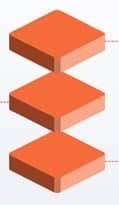 Prior we identified three tiers of relationships. It is helpful to review those tiers and create a set response you can give when someone asks how you are. As you adjust to invisible impacts, consider how and if you want to share them. Level 3 acquaintances may not need to know.
Prior we identified three tiers of relationships. It is helpful to review those tiers and create a set response you can give when someone asks how you are. As you adjust to invisible impacts, consider how and if you want to share them. Level 3 acquaintances may not need to know.
Level 1 consists of those we are closest to. This level may include a spouse, partner, best friends, and siblings. We share the most with and want to stay close to these folks. Responses in this area tend to be the most specific. Sample responses include It’s hard to adjust to the changes my body demands. I worry about what can happen, but it doesn’t preoccupy my thoughts like it used to. My pain is still bad, so I’m sorry if I get impatient. I feel so much better. I am relieved.
Workbook Chapter 18 Rebuilding Relating to Others
Jot down responses you feel comfortable giving to the three levels of people.
Level 1 is made up of those we are closest to. Responses in this area tend to be the most specific. Sample responses include “It’s hard to adjust to the changes my body demands”. “I worry about what can happen, but it doesn’t preoccupy my thoughts like it used to”.
Level 2 consists of people we consider friends, family (though sometimes not), certain colleagues, and close neighbors. Responses in this area could include I still have some challenges, but I am much better. I’m holding my own. I’m feeling well. Jot down responses you feel comfortable giving to this group.
Level 3 includes people we encounter but don’t feel particularly close to, or with whom we don’t share personal information. Responses in this area could include All is moving along. I feel so much better now. Jot down responses you feel comfortable giving to this group.
Adapting at Work
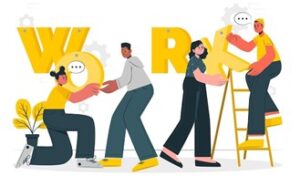 When and if you are able to return to work, you might need a modified schedule. Clearly stating your needs with your manager or human resource representative is important so expectations aren’t muddled. Work hours may need to continue to accommodate doctor appointments, downtime, etc. Some positions allow working remotely or shifting work hours to meet your needs. Think about what you need and who needs to know what.
When and if you are able to return to work, you might need a modified schedule. Clearly stating your needs with your manager or human resource representative is important so expectations aren’t muddled. Work hours may need to continue to accommodate doctor appointments, downtime, etc. Some positions allow working remotely or shifting work hours to meet your needs. Think about what you need and who needs to know what.
Workbook Chapter 18 Rebuilding Adapting at Work
Identify what you need at work, who needs to know what you’re going through, and what you can say.
|
What I need |
Who needs to know |
What I can say |
|
|
|
|
|
|
|
|
|
|
|
|
|
|
|
|
Rebuilding Keeps Evolving
Growth and life evolve, and this time is no different. Adjusting requires integrating experiences and being aware of where you are and how you choose to live now. Below are some additional resources that can support your rebuilding.
Inheritance of Hope contains resources for parents who have a child with a life-threatening illness. It offers suggestions as well as where to apply for wish-granting organizations that can offer financial assistance to your child, a vacation getaway for the family, and more.[6]
Masumi Goldman’s Rise and Thrive: A Guide for Transforming Your Mood, Cultivating Inspiration, and Living Vibrantly with Chronic Illness.[7]
Craig Svensson’s When There Is No Cure: How to thrive while living with the pain and suffering of chronic illness.[8]
Ilana Jacqueline’s Surviving and Thriving with an Invisible Chronic Illness.[9]
Kimberly Rae, Sick and Tired: Empathy, encouragement, and practical help for those suffering from chronic health problems.[10]
All moments in our lives change us. Positive times bring us joy and strengthen us. Predictable days allow us to feel a rhythm. But it is the times of greatest challenge that move us forward. Challenges push us to reevaluate where we’ve been, how we’ve changed, and how we want to rebuild on firmer ground to be our best selves.
Cindy’s Journey I Don’t Want to Be Normal
 It has been three years. Three long years. Three short years. Through it all, I believed I would never take anything for granted. I would feel how music pulsates every cell into a blissful rhythm. I would hold onto an appreciation of my body and maintain an awareness of what it needs. I would re-experience gratitude for others’ love and caring. I would continue to feel the spirit of the universe. I would forever appreciate what I’ve been through and how I fought.
It has been three years. Three long years. Three short years. Through it all, I believed I would never take anything for granted. I would feel how music pulsates every cell into a blissful rhythm. I would hold onto an appreciation of my body and maintain an awareness of what it needs. I would re-experience gratitude for others’ love and caring. I would continue to feel the spirit of the universe. I would forever appreciate what I’ve been through and how I fought.
But, as the days pass and routine sets in, the purity of my intentions wanes as mundane irritations, annoyances, and sorrows surface. When I falter, I try to recapture the clarity that the crisis brought and orient myself back to that place of gratitude. Sometimes I am successful and the sails are righted once more. Other times my ego knocks too loudly and I slip away from my goal.
I don’t know what will happen as I move through more days. But I do know I don’t want to return to normal. I want to be better.
Changes in How We Live
If I do too much, my brain goes haywire. I get a fuzzy, numb feeling in my brain and I can’t think.–CS
We are often anxious to resume the routines of our life. Not only do we desire normalcy, but our co-workers, families, and friends look to us to pick up where we left off. While some are able to return to a life similar to that before the crisis, for many the path is not as straightforward, and changes are permanent. We often don’t know how our lives are going to change until it happens. One thing is clear: healing and coping take time, and some of the healing is neurological in nature.
Health journeys affect different parts of our bodies, brains, and emotions. Our age, overall health, and pre-existing conditions complicate or ease our way. Medical personnel are cautious about telling us too many different possible outcomes because their focus is on healing and not overwhelming us with too many “maybes.” While we want medical personnel to be experts on how we can heal and reduce our symptoms, we need support to manage the hurdles that come along, even after the initial crisis/diagnosis/treatment/surgery is over.
Professional health organizations, such as the American Cancer Society and the American Heart Association, have links on their sites that present information and support for adjusting to both the obvious and the invisible changes in our lives that treatment brings. Hospitals, larger medical offices, and communities also offer support and information.
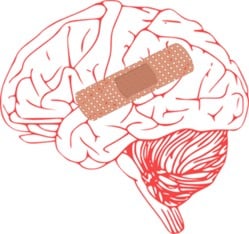 I have memory loss, as the primary site of the surgery was where memory is stored in the brain. –JZ
I have memory loss, as the primary site of the surgery was where memory is stored in the brain. –JZ
After treatment, I still had to be extremely careful of germs. I became ultra-sensitive to them and worked very hard to avoid what I could. My fear of the unknown or if I was exposing myself to something I didn’t realize was always on my mind. Even my kids are aware. They became ultra-sensitive to where we are and who is around us. We can be in the food store and if someone coughs, they notice right away and we leave the aisle. –LL
Alive and yet there’s grief. Grief over the years I’ve spent in surgery, on-going treatment, and healing. Grief over the restrictions I will have for the rest of my life. Grief over how doctor appointments pop up on my calendar as if they were a hobby. Grief over losing the naivete that I’ll live forever. Here I am alive but lost. –CWS
Chronic Pain
It’s so hard to learn how to manage my physical pain. –CK
Chronic physical pain is one of the most challenging experiences. Those with chronic pain often “look” okay, but inside, their bodies scream with aches, strains, throbbing, and/or burning. They struggle with the persistent impact pain has on daily life. There are days when moving is easier, and other days when each step sends shocks throughout the body. They fight to keep the pain/illness from taking control over their lives.
As a society, we have learned how to support someone experiencing an acute illness but fall short of helping those whose pain extends beyond the short term. There are practitioners, referred to as pain management specialists, who focus on treating chronic pain. Treatments vary depending on the source of the pain and other circumstances. Asking your physician for a recommendation is one way to find such a specialist. Major hospitals have pain management clinics that include physical therapy, occupational therapy, biofeedback, acupuncture, mindfulness, anti-inflammatory treatment (e.g., cryotherapy), and more.
It upsets me that people tell me what I shouldn’t do because of the chronic pain and condition. I hate hearing that I should slow down. –LE
Cindy’s Journey Time to Heal
 Today is a beautiful autumn day. Blue sky, colorful leaves, brisk temperature; perfect for a walk. I grab my shoes, but while putting them on, I realize I ache and am too tired to journey out. Sigh. I whine to myself, “I am SO tired of being in pain and tired,” but then it hits me. I realize there is a benefit to feeling this way. Feeling pain or fatigue is the body’s stop sign. Just like coming to an intersection in the car, pain is our red, octagonal sign with large white letters that reminds us to STOP and evaluate when to go. While I don’t like how often I need to stop, I know if I keep moving, I will crash, and rebounding will take even more time. With this moment of clarity, I settle into a comfy chair, open the window, and feel the fresh air. Tomorrow, I might be able to take that walk. Today, I need to heal.
Today is a beautiful autumn day. Blue sky, colorful leaves, brisk temperature; perfect for a walk. I grab my shoes, but while putting them on, I realize I ache and am too tired to journey out. Sigh. I whine to myself, “I am SO tired of being in pain and tired,” but then it hits me. I realize there is a benefit to feeling this way. Feeling pain or fatigue is the body’s stop sign. Just like coming to an intersection in the car, pain is our red, octagonal sign with large white letters that reminds us to STOP and evaluate when to go. While I don’t like how often I need to stop, I know if I keep moving, I will crash, and rebounding will take even more time. With this moment of clarity, I settle into a comfy chair, open the window, and feel the fresh air. Tomorrow, I might be able to take that walk. Today, I need to heal.
[1] Tedeschi, R., & Calhoun, L. (1996, July). The posttraumatic growth inventory: measuring the positive legacy of trauma. DOI: 10.1007/bf02103658. Retrieved April 30, 2020, from https://www.ncbi.nlm.nih.gov/pubmed/?term=the+posttraumatic+growth+inventory%3A+measuring+the+positive+legacy+of+trauma
[2] Zawadzki, M. J., Smyth, J. M., & Costigan, H. J. (2015). Real-time associations between engaging in leisure and daily health and well-being. annals of behavioral medicine, 49(4), 605-615. doi:10.1007/s12160-015-9694-3
[3] Eschleman, K. J., Madsen, J., Alarcon, G., & Barelka, A. (2014). Creative activity measure. PsycTESTS Dataset. doi:10.1037/t69763-000
[4] Summers, I. (2019, March 18). 23 Hobbies guaranteed to beat stress. Retrieved April 30, 2020, from https://thriveglobal.com/stories/23-hobbies-guaranteed-to-beat-stress/
[5] Zawn Villines (2017). “What is the best type of meditation?” Retrieved April 30, 2020 from https://www.medicalnewstoday.com/articles/320392.php
[6] https://inheritanceofhope.org/images/resources_for%20parents_with_a_life-threatening_illness.pdf
[7] Goldman, Masumi. (2019). Rise and thrive: a guide for transforming your mood, cultivating inspiration, and living vibrantly with chronic illness. Self-published. https://www.amazon.com/s?k=Rise+and+Thrive%3A+A+Guide+for+Transforming+Your+Mood%2C+Cultivating+Inspiration%2C+and+Living+Vibrantly+with+Chronic+Illness&ref=nb_sb_noss
[8] Svensson, Craig. K. (2019). When there is no cure: How to thrive while living with the pain and suffering of chronic illness. West Lafayette, IN: Consilium Publishing.
[9] Jacqueline, I. (2018). Surviving and thriving with an invisible chronic illness: how to stay sane and live one step ahead of your symptoms. Oakland, CA: New Harbinger Publications.
[10] Rae, K. (2013). Sick and tired: empathy, encouragement, and practical help for those suffering from chronic health problems. Raleigh, NC: Lighthouse Publishing of the Carolinas.
Featured image courtesy of Content Pixie on Unsplash.

0 Comments